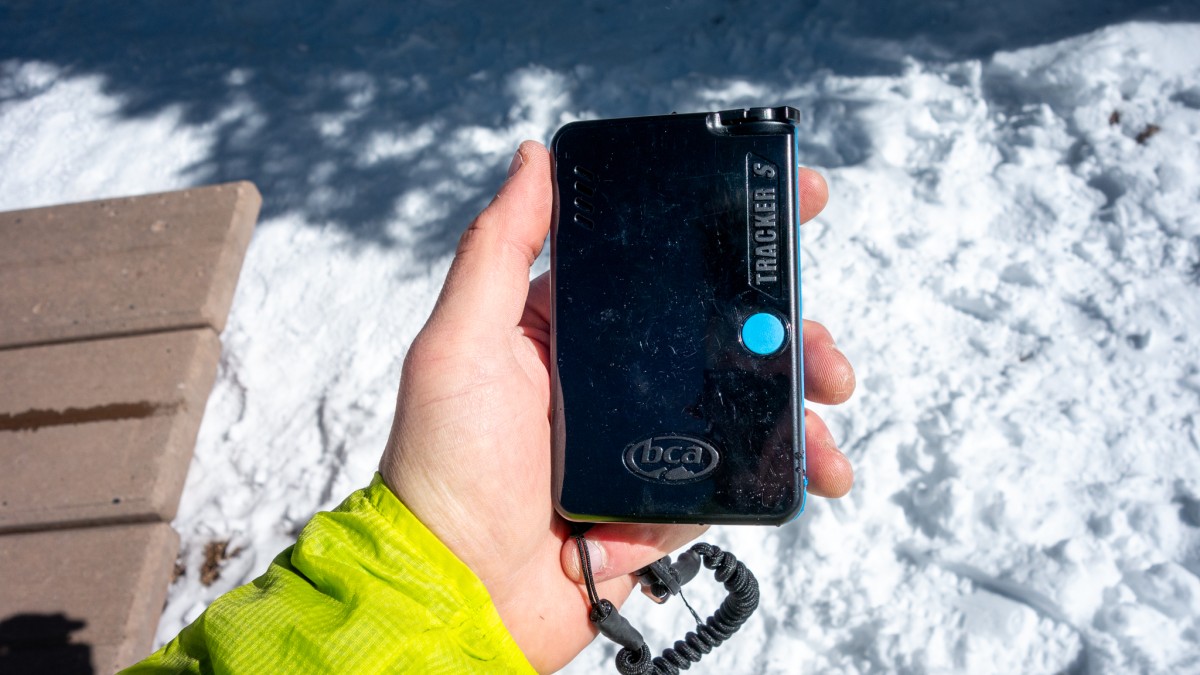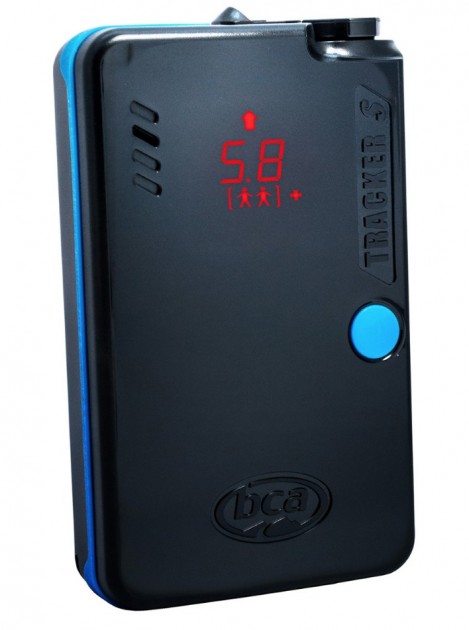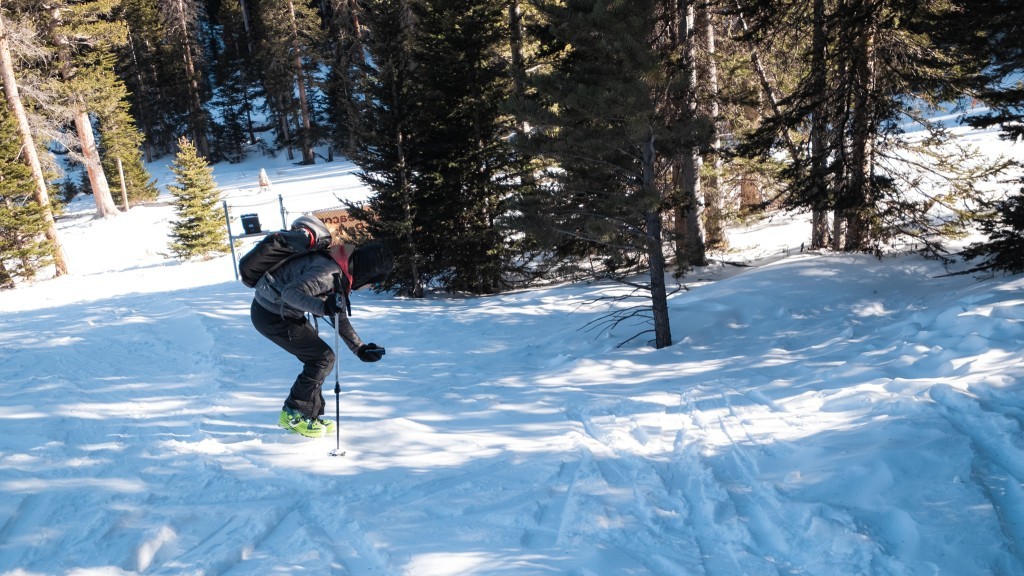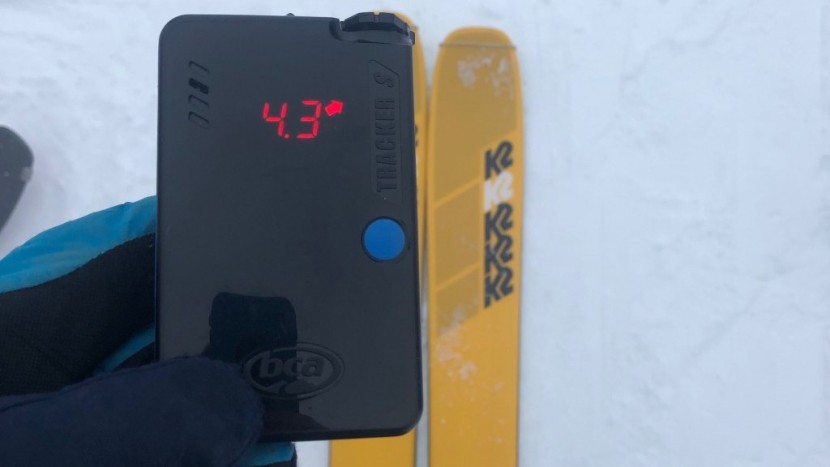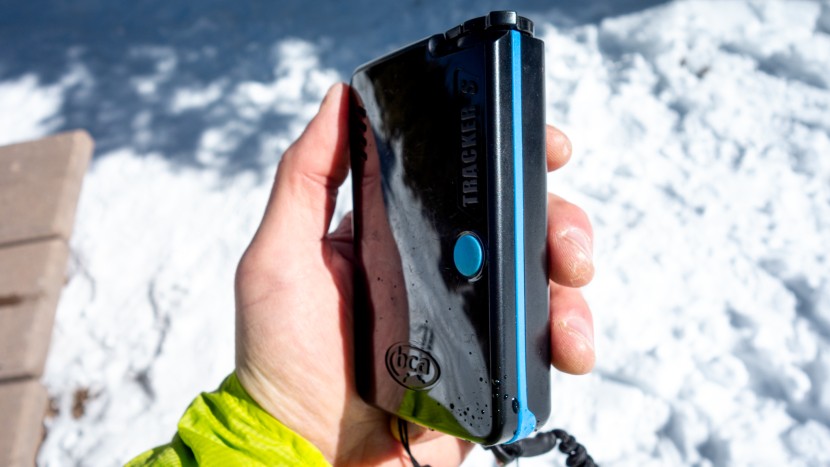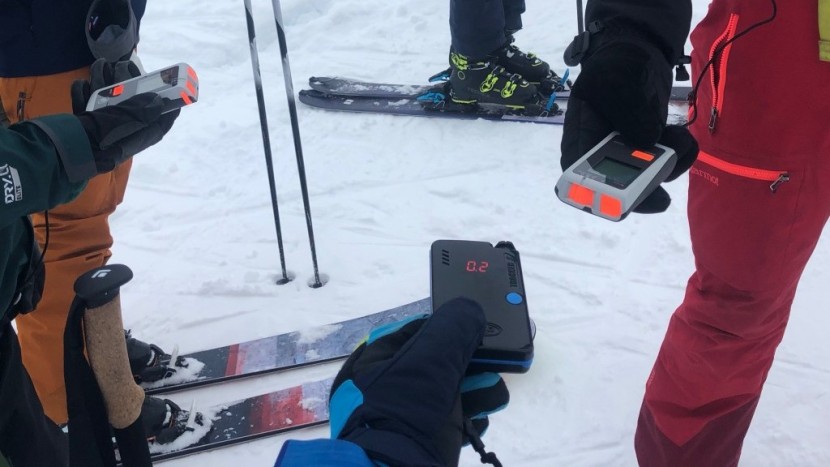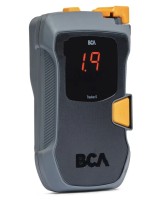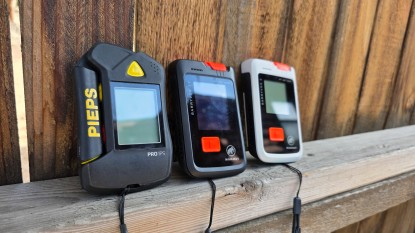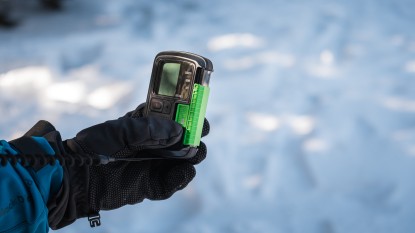
Our Verdict
Our Analysis and Test Results
Backcountry Access released a new version of the Tracker S with an updated housing designed to be easier to operate with gloved hands. It's also lighter weight and lower profile than the previous version. Our links point to the new version, but our review text still pertains to the previous model.
Don't let the below-average price tag nor the “S” (which stands for "simple") fool you into thinking the BCA Tracker S isn't a capable beacon. With its lightning-fast processor, easy-to-use interface, and top-tier precision during fine searches, this model is consistently quick at finding a single beacon. That said, it's not our first choice for guides or avalanche educators – its software can't be updated, you can't adjust features, it offers a middling range, and it doesn't feature a true marking function. However, for the vast majority of backcountry travelers, this impressive beacon is an incredible value.
Speed
Sharing the same processor as the Tracker3 and Tracker4, the Tracker S is fast at finding buried victims. Even with a lot of signal overlap, it rarely gets bogged down during a coarse search. While all rescuers should strive to move slowly and with precision during a fine search, this beacon manages to keep up most of the time.
BCA states that their design philosophy is simplicity is speed. This point is tough to argue with, particularly during stressful situations. Even though other beacons have more features, the Tracker S includes the main features that most users want while consistently providing the fastest rescue times for 1-2 person burials.
Interface
The Tracker S is one of the simplest beacons on the market and doesn't take very long to figure out. Its small feature set and focus on single victim search allows this beacon to be used right out of the box with little setup. Once you understand the symbols, the display is bright and the indicators are easy to follow.
Our main complaint with the Tracker S – and all BCA beacons, for that matter – is that it doesn't use the colloquial “send, search” phrases for its on-off switch. Instead, BCA uses the more proper term “transmit” for what many people call “send”, and these words are abbreviated as “se” and “tr” on the switch and display. In our experience, this has caused a lot of confusion, especially among new users in introductory avalanche courses, as they try and figure out just exactly which mode they're in. Additionally, “tr” at first glance on the display looks a whole lot like “er”, which is almost as often mistaken for an error code.
Notable Features
One of the two major differences between the Tracker3 and the Tracker S is this model doesn't have an internal motion sensor. It has a fixed five-minute time frame before it reverts from search back to transmit. The idea behind this feature is that if a secondary avalanche occurs while the rescuer is still searching, they have some hope of being rescued once their beacon switches back over. This arguably carries some catastrophic consequences if you're working a complex burial and don't notice your beacon has switched back to send. Fortunately, a warning tone sounds 30 seconds before auto-revert, which can be aborted by pressing the single button on the front. The Tracker S has above-average battery life, with 250 hours in transmit or 50 hours in search only. Even after 200 hours in send mode, the Tracker S can still search for up to an hour.
Accuracy
The fast processor and direct action response of the Tracker S allow it to transmit real-time data, which keeps you on track throughout a search. In the coarse search phase, distances update frequently, but compared to other beacons we tested, the direction arrows are jumpy and can be harder to follow.
While it is fine in the course search, the Tracker S excels once you hit the fine search phase. For targets buried up to 1 meter deep, we would reliably land within 25 cm of a probe strike every time. This is partially thanks to our lead tester properly executing a bracket, and most of the beacons in our test fall within this range for fine search accuracy, but it is notable if they do not. Compared to other beacons on the market, the Tracker series from BCA – including the Tracker S – continually perform the best during a fine search.
Multiple Burials
The Tracker S is built to easily jump to the closest and strongest signal. Using BCA's proprietary Signal Suppression function, it can also suppress a single signal for 60 seconds. Like most things, these particular design features have advantages and disadvantages.
The ability to easily jump from one signal to another is fantastic for microstrip-searching during truly complex burials or in situations where you have three or more beacons buried in close proximity. In these situations, the multi-burial feature – whether it be Signal Suppression or a mark or flag function – is more likely to fail, either because it does not blind the intended signal or, worse, blinds two signals at once. The ability to distinguish and jump between multiple signals in close proximity allows you to think and work through this difficult situation without having to rely on your beacon's processor alone.
For very close proximity burials, you need to be aware that the Tracker S disengages Signal Suppression after 60 seconds, at which point it will again begin to pick up multiple signals. This design aspect isn't as important when people are buried further apart, as its ability to lock onto the closest signal will make sure you stay with the closest beacon. However, when two models are buried very close to one another, and you aren't able to bracket the second beacon very quickly, it can be problematic.
One of the most helpful features for multiple burials is Big Picture mode. This function will display all of the signals within range simultaneously by bouncing quickly between each buried beacon's distance and direction. This allows you to build a mental map of the field and better understand which target you need to head toward next. For guides and avalanche educators trying to pass their respective beacon drills – whether that be an AMGA ski guide exam or pro-level certification – we think this is one of the most helpful functions of the Tracker S. A few of our testers passed their exams using the similarly designed Tracker 3, and Big Picture mode was incredibly helpful in obtaining a good overview of a complex burial scenario.
Range
While the maximum stated range of the Tracker S is 55 meters, BCA recommends a search strip width of 50 meters. For our testing, we recorded each distance where we picked up a consistent signal for a single target and averaged it to determine real-world performance. The Tracker S had an average range of 42 meters in our tests, which is average across the industry.
Should You Buy the Backcountry Access Tracker S?
For the price, this is our favorite beacon for speed, accuracy, and overall ease of use. The more basic beacons have gotten a lot more capable in recent years, including this one. But unlike the Tracker S, many of them have also become much more expensive. We firmly believe that this beacon is the best of the bunch, considering its performance versus price point.
Tracker S vs. Tracker3
We understand that the Tracker S and Tracker3 are nearly identical, with the exception that the Tracker S does not include a motion sensor and its software is not updatable (nor does it have a micro-USB port).
What Other Avalanche Beacons Should You Consider?
The Tracker S is a fantastic all-around beacon and will suit the needs of most backcountry travelers, likely for many years to come. Its easy-to-use interface makes it perfect for folks just getting into the backcountry, and experienced users will appreciate its speed and accuracy. That said, for guides, avalanche educators, ski patrollers, and others working professionally in the snowy mountain, it's worthwhile to invest in a more featured transceiver like the Black Diamond Guide BT or Mammut Barryvox S.
| Awards | Best Bang for the Buck |
|---|---|
| Price | $300 List Check Amazon (on sale!) |
Overall Score  |
|
| Star Rating | |
| Bottom Line | A capable, easy-to-use beacon with a lightning-fast processor and a low-profile design |
| Pros | Fast processor in fine search, low profile design, easy to use interface |
| Cons | Average range, no option to update software, signal suppression disengages after 60 seconds |
| Rating Categories | Backcountry Access T... |
| Speed (30%) | |
| Interface (25%) | |
| Accuracy (20%) | |
| Multiple Burials (15%) | |
| Range (10%) | |
| Specifications | Backcountry Access T... |
| Manufacturer's Stated Max Range | 55 m |
| Measured Range | 42 m |
| Flagging Feature | No (Signal Suppression) |
| Digital or Analog Modes | Digital |
| Stated Battery Life (in "Send") | 250 hours |
| Number of Antennae | 3 |
| Measured Weight | 165 g |


